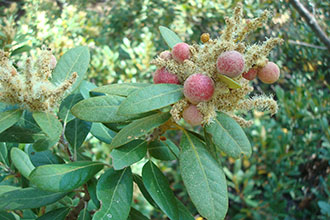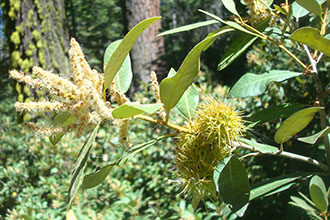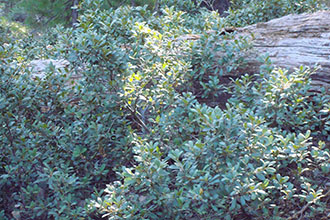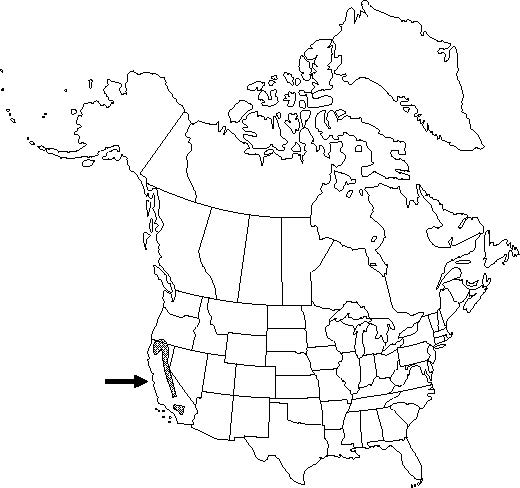Taxonomy: Kingdom - Plantae (plants). Subkingdom - Tracheobionta (vascular plants). Superdivision - Spermatophyta (seed plants). Division - Magnoliophyta (flowering plants). Class - Magnoliopsida. Subclass - Hamamelididae. Order - Fagales. Family - Fagaceae (beech). Genus - Chrysolepis Hjelmquist. Species - Chrysolepis sempervirens (Kellogg) Hjelmquist
Ecology: Bush chinquapin often dominates or codominates the understories of mid-seral coniferous forests adjacent to montane chaparral. Coniferous forests may also contain scattered thickets of bush chinquapin on sites unfavorable to conifer growth, such as rocky outcrops or dry ridges. Bush chinquapin occupies breaks in the overhead canopy where windthrow or tree death has occurred. Montane chaparral is seral to various coniferous forests. Bush chinquapin is an enhanced survivor in these early- to mid-seral communities. Its cover is greatest in the late mid-seral stage, when tree canopy begins to close. Bush chinquapin is moderately shade tolerant and grows in the lower strata of near-climax open coniferous forests. When fire is excluded from coniferous forests for long periods of time, bush chinquapin is shaded out. Montane chaparral represents a topographic or edaphic climax on some sites, such as steep, south-facing slopes or areas with shallow rocky soil. Bush chinquapin is considered part of climax vegetation on such sites.
Bush chinquapin is a common codominant of montane chaparral. Occurring at higher elevations than other types of chaparral, montane chaparral consists of low-growing, often dense thickets of sclerophyllous shrubs in the coniferous forest zone. Forest cover is lacking, usually due to removal of trees by fire or logging. Mountain whitethorn (Ceanothus cordulatus), snowbrush ceanothus (Ceanothus viscidiflorus), and greenleaf manzanita (Arctostaphylos patula) are frequent codominants. Together these shrubs may form almost impenetrable stands. Bush chinquapin also occurs in pure stands. These are not extensive in montane chaparral but are common in alpine zones. Bush chinquapin hybridizes with giant chinquapin (C. chrysophylla) in western Siskiyou County, where distributions of the two species overlap.


